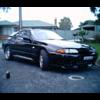Xr6 Gt35r
Announcements
-
Latest Posts
-
Sharing results from recent Liberty Walk R35 GTR, since they are still considered as somesort of a V36 Skyline. We do them turbos too. This are high flowed SS-1 models with ball bearing conversion done. Car have managed to pull 485awkws @ 20Psi so far pushing limitations of factory built engine. The build list for R35 GTR enthusiasts as follow : HyperGear high flowed stock turbos in SS1 (G25-660 specs) Custom titanium intake pipes. Vspec performance titanium front pipes. Vspec performance 4" titanium exhaust. Upgrade fuel pumps. 1200cc injectors. Ignition coilpacks Hks intake plenum. Hks intercooler piping. Greddy intercooler. Greddy bovs. Top-secret coolant reservoir. Emtron ecu. Straight E85. Built gear box.
-
Nah no bearings, just slip fit. Would be a reasonably challenging but not impossible job to modify it to run bearings but I'm hoping that's not necessary as I may have well built one myself if I end up spending hours modifying it!
-
Brumbys with good shells are bloody expensive, I've looked at 2 "cheaper" cars, and walked away from both, plus after some research spare parts are fairly sparce I'm starting to think that I missed the boat on finding a clean one that is straight (ish) and without alot rust I'm starting to think about a old Hilux as panels and other parts are much more available as they sold tens of thousands of them I use to be indecisive but now I'm not sure
-
By soviet_merlin · Posted
A Brumby would probably fit a big metal toolbox in the back... this is how it begins -
Picked up a new OEM boot seal for the MX5 today as the old one got ripped a bit by me being a idiot by seeing if I could fit a large metal tool box in it, it didn't fit, and ripped the seal with the corner of the tool box I am still waiting on time to get the cams and new balancer installed, as well as the repairs to the boot Time will not be an issue soon though
-






Recommended Posts
Create an account or sign in to comment
You need to be a member in order to leave a comment
Create an account
Sign up for a new account in our community. It's easy!
Register a new accountSign in
Already have an account? Sign in here.
Sign In Now